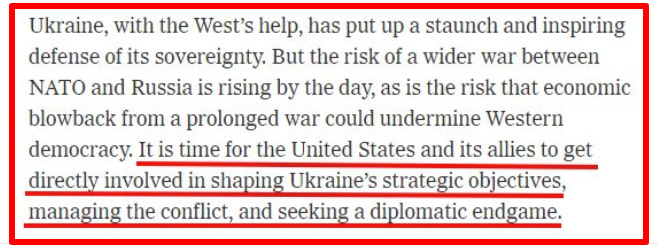
I took a week off from scowling and screaming at Tiger Team’s AGI system that refuses to be born in order to luxuriate in code that has to work on only one server, and has to be legible only to me. The bliss, I tell you, the bliss!
About that 3,000-word whatever appearing in The New York Times Magazine, titled “The Untold Story of ‘Russiagate’ and the Road to War in Ukraine. Russia’s meddling in Trump-era politics was more directly connected to the current war than previously understood.”
Jim’s story is conspicuous for what he deliberately ignores, namely the preinaugural dump of 280,000 messages sent and received by Paul Manafort’s daughter Andrea from 2012 through late 2016, as well as Paul’s girlfriend in Kyiv, ties to Thomas Barrack Jr., Alexander Vogt, and so on. I could not force myself to read the whole piece carefully, but this bit caught my attention.

A fresh crop of journalists from around the world, many by way of Moscow, have converged on Kyiv over the last eight months. They are not providing a fresh perspective on the overworked, underburdened experience of US diplomats, preferring to instead specialize on the return of dead American crusaders and unbearable misery of occupation.
The six-minute reportage below caught my eye last week. It’s about a dead volunteer fighter with no prior combat experience who tagged along with the Norman Brigade, a Canadian-led whatever, that raises money on Twitter and Facebook selling war-versus-Russia merchandise. The unit is reportedly in the process of being folded into Ukraine’s notorious International Legion.
Apropos of shifting alliances, CNN credits two members of Ukraine’s parliament who helped retrieve the corpse — MPs Oleksandr Trukhin (kicked out of the president’s Servant of the People Party for offering a cop a $150,000 bribe after a car wreck) and Aleksandr Kovaliov (the ex-Afghanistan war paratrooper who dresses up in Stalin tunics. He’s standing between MPs Vadym Novitsky and Andriy Derkach, both notorious pro-Russia stooges, in the photo below).

Which brings me Charles A. Kupchan’s scream for attention appearing in The New York Times, titled “It’s Time to Bring Russia and Ukraine to the Negotiating Table.” I’m not sure what the latest version of the op-ed is. It’s been revised and republished repeatedly. The paragraph below, however, remains, as of this writing, and that’s bad enough.
From 2014 to 2017, Kupchan served as Special Assistant to the President and Senior Director for European Affairs on the National Security Council in the Obama White House.
Such staying power for a public servant unused outside the realm of parody since, oh, 1997? Shaping Ukraine’s strategic objectives is such a drained cliché, malleable, as was its antonym long before Kupchan smirked into view.
Kupchan was probably out eating lunch when we cleared the air last September about meddling in Ukraine’s affairs1. As I recall, he and his deputies were similarly clueless when I chatted them up about Belarus during my former life. As I recall, at the time he was Director for European Affairs on the National Security Council during Bill Clinton's first term. The message then was do something now because, otherwise, the Belarusian brand of despotism and inanity will inevitably spread to Russia and Ukraine. Which, of course, it did.
Setting the Plate Clear. Subjectivizing Ukraine and Wagner PMC (September 6, 2021)



